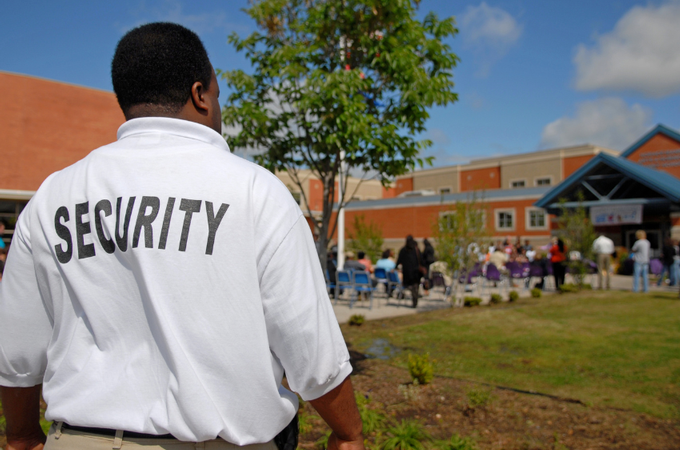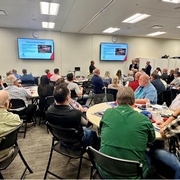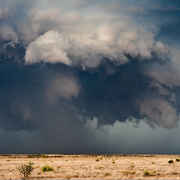Uvalde School Shooting Causes Ministries to Question Their Preparedness
August 17, 2022

Steps to Help You Respond vs. React in a Crisis
Written by Craig Cable, Director of Ministry Safety, ACG Colorado
If there is one thing I have learned over the last decade while working private security and as a sworn peace officer, the more critical the incident, the more likely change will come out of it. Much like a pendulum, an incident occurs, and everyone cries for change. Then, as time passes, focus and energy wane, and we slip back into our normal pre-incident routines. Well, some events are so heinous that they become watershed moments that truly drive significant change. I believe that the school shooting at Robb Elementary School in Uvalde, Texas will be one of those instances that force major changes in policy, emergency plans, and response tactics.
On May 24, 2022, at approximately 11:30 a.m., an 18-year-old gunman walked unchallenged into Robb Elementary School through an unlocked door and executed two teachers and 19 students ranging in age from 9 to 11 years old. Through a tragic series of events (both intentional and unintentional), the shooting in Uvalde had become the second worst school shooting in our country’s history; second only to Sandy Hook where 20 small children and six adults were killed.
Within days of the incident, emails and phone calls started pouring in from churches and Christian schools asking me if I had any recommendations to help safeguard their ministry from an attack. While some of my advice was specific to the location, there were a few general themes that applied to everyone.
Preparedness is not a one-and-done endeavor
As much as we all wish we could check the PREPARED box, preparedness is not a task to accomplish but rather a pursuit to follow. Things are always changing, programmatically, seasonally, culturally, and environmentally. Threats are constantly emerging, and we need to have a process for continually evaluating and assessing the impact that those threats could have on our ministries. Additionally, there needs to be a security “champion.” This is a person who is responsible for making sure that assessments are being made and that there is someone to respond to should an attack occur. In the case of the Uvalde school shooting, it is my understanding that there was no single person on campus that day who was focused on the security and well-being of the children. While there was no way to predict that an attack was imminent, having a security person inside the building at the time of the attack may have changed the outcome.
[TIP] Schedule periodic meetings (quarterly or bi-annually) with members of your leadership team as well as key volunteers who have a safety or security responsibility. The goal is to make sure that everyone is up to speed on current or future exposures that could pose a potential threat to the ministry. It is also important that you have sufficient security resources present during times when the ministry is most vulnerable.
The road to a catastrophic failure is paved with small mistakes
If you look at historical catastrophic events, you will see that most of these incidents were the result of the convergence of bad timing, errors, unforeseen circumstances, and negligence. In the case of the Uvalde school shooting, it was an unlocked school door that had been previously propped open, which gave the shooter access into the building. Once the shooter was in the classroom, a lack of leadership, communication, training, and the execution of tactics were all contributing factors to the catastrophic loss of life.
[TIP] Be vigilant about the little things. Ministries are notorious for being inconsistent with security practices. Propping open doors, not screening some volunteers, not being consistent with child check-in/check-out practices, and not properly training new volunteers are all accidents waiting to happen. While a security champion is important, protecting the ministry should be a team effort shared by many. Instill and encourage a culture of security that has everyone being vigilant to potential threats.
The body cannot go where the mind has not gone first
This statement is often quoted in security and law enforcement training, and I could not agree more. While it is possible that people can spontaneously rise to the occasion in a crisis, it is more likely that individuals will fall back to their highest level of training. If they are trained well AND have the right mindset, the more likely they are to prevail in the crisis. As a peace officer, I have been through several active shooter training courses. I participated in the same active shooter response training that the Uvalde Police Department had recently been through. I believe mindset played a significant factor in the protracted response timeline. All it would have taken was a single officer to lead the charge, and I believe others would have followed.
[TIP] Invest time and energy in scenario-based training that takes the hypothetical and theoretical out of the equation. The goal is to pressure test your processes and training in an environment where an incident is likely to occur. When it comes to deciding on what topics to train on, be sure to include both low-level and high-level threats. I encourage ministries to train volunteers in things like de-escalation, lost child response, medical emergencies, and dealing with disruptive individuals, and the aggressive attacker. Having some level of training in all these areas will help your team stay calm and make good decisions in what could be a highly stressful situation.
In closing, my heart and prayers go out to everyone impacted by the tragic events of May 24th. I believe we all have a responsibility to the victims, their families, and the communities that we serve to take the hard lessons learned from Uvalde and begin the process of looking objectively at the changes we need to make within our ministries to identify potential threats, minimize the small preventable mistakes, and properly train our staff and volunteers. While I recognize that we cannot prevent every attack, I want to know that I at least did everything I could to help keep others safe.
If you have further questions, please feel free to reach out to me at ccable@americanchurchgroup.com.
Craig?is a sworn peace officer and serves as a Reserve Deputy Sheriff for the patrol division at the Larimer County Sheriff’s Office. has trained hundreds of security team leaders and volunteers and was the lead developer of the?Safe and Secure?Church: The?Ministry Approach?training kit produced in partnership with Group Publishing and Brotherhood Mutual Insurance Company.?
© 2022 American Church Group of Colorado, LLC. All rights reserved.?The information in this article is intended to help your ministry better understand issues of vulnerability and mitigate risks.? It does not constitute legal advice between an attorney and a client. If specific legal advice is required, your ministry is encouraged to consult with a local attorney.?Neither Brotherhood Mutual Insurance Company, American Church of Colorado, LLC, nor?the author assumes liability for reliance upon the information provided in this?article.
- May 14, 2024
- Documenting an incident: Essential information you need to capture.
-

-
Of all the liability claims that Brotherhood Mutual pays out each year, bodily injury and medical claims are at the top of the list. If your ministry hasn’t experienced a slip-and-fall incident resulting in an injury, it is just a matter of time until you do.
- May 14, 2024
- Have you reviewed your Governance Documents?
-

-
For most churches, and many nonprofits, the end of the school year signals the end of the ministry year. Many of those same churches and nonprofits have fiscal year ends as of June 30. This is a great time to review what is commonly called your organizational “governance” documents.
- May 14, 2024
- Can Claims Be Avoided?
-

-
As I sit here in Kansas watching the news and reports of severe weather in my State and those States that surround me, I must remind myself, “there is not much I can do about this.” As a “fixer” this is difficult for me. The storms are going to roll in and at least we have the weather service who helps prepare us to “stay out of the way.” To answer my own question, we cannot avoid weather related claims.
- May 14, 2024
- From the Exiled Nigerian Prince to a Trusted Vendor: It's Time to Pay Attention to Cyber Threats
-

-
Remember the days when hackers were imagined as shadowy figures living in their parent's basements, playing video games, and eating Doritos while crafting scam emails? Well, that image is now outdated. The world of cybercrime has evolved, and it's both sophisticated and terrifying. According to a recent annual cyber claims report from an insurance carrier called, Coalition, the Federal Bureau of Investigation (FBI), received more than 880,000 complaints of cybercrime in 2023 with reported losses of $12.5 billion.
- April 11, 2024
- Mission Trip Fundraising
-

-
If your church or nonprofit engages in short-term, summer mission trips, this time often signals the beginning of fundraising projects. Before you appeal for donations, it is important to review the rules of what the IRS calls “deputized fundraising” making sure you have the proper policies and procedures in place to maintain compliance. Failure to maintain compliance could result in the loss of your tax-exempt status.
- February 19, 2024
- Is Your Facility Use Agreement Working For You?
-

-
With Valentine’s Day upon us and the official May-to-October wedding season not far behind, many couples are searching for the perfect wedding venue. Schools and performing arts organizations are looking for end-of-year performance and graduation venues. Your church or nonprofit facility might be the perfect match. Engaging the opportunity has stewardship and community outreach benefits. But opening your facilities to other activities and users involves risk. A Facility Use Policy sets the standard for your facility use. A Facility Use Agreement implements that standard. To be effective, leaders must answer three questions.
- February 19, 2024
- PART TWO: How protected are members of your safety team? The answer may surprise you.
-

-
The focus of this article is to address some of the risks and liabilities associated with having an armed safety team. Click here to read PART ONE.
- February 19, 2024
- Client Success Advisors at your Service!
-

-
Over the last few years, our agency has continued to grow and expand across the Midwest & Rockies, now spanning six states: Nebraska, North Dakota, South Dakota, Kansas, Colorado, and Wyoming. Serving over 3,000 ministries and nonprofit organizations, we are deeply grateful for the opportunity to support you.
- February 19, 2024
- 5 Predictions on What is Going to Happen in 2024's Church Insurance Market
-

-
Do you ever feel like some words just get overused? I do. I live in a house with two teenagers and a sweet little boy who watches everything they do. The word "literally", gets used in 80% of sentences... It isn't even impactful anymore. It means nothing. Because if they didn't use that word, I would just expect that most of what they were saying was metaphoric in nature.
- January 12, 2024
- Worker Classification Risk: Employee v. Independent Contractor
-

-
The new year signals the end of one payroll year and the beginning of another. As you process employee W2s and independent contractor 1099s, take time to evaluate a critical aspect of your ministry business risk management program: proper worker classification. While the percentage of the American workforce comprising “contingent workers” (independent contractors, contract employees, temporary employees, leased employees) was rapidly increasing before COVID, since COVID and the acceptance of the remote workplace, use of contingent workers has skyrocketed. You probably have several on your payroll.
- January 12, 2024
- How protected are members of your safety team?
-

-
Over the last few years, I have had the opportunity to speak with several thousand church safety team members across the country. By far the most common question I get from this group is “Am I covered if something bad happens?” This is not a question that only pertains to armed safety team members. Truth is, anyone who serves in the protection of a ministry should be asking that question. The purpose of this article is to help ministries be better informed and more prepared in advance of an incident occurring.
- January 12, 2024
- Stay Ahead of the Freeze: Sign Up for Text Alerts
-

-
We’re encouraging all customers to stay ahead of the freezing weather by signing up to receive Extreme Freezing Weather Text Alerts from Brotherhood Mutual. It’s new. The alert also links to actions you can take immediately to prevent or minimize damage to your buildings before forecasted weather arrives.
- January 12, 2024
- There's Something for Everyone at this Year's 2024 Ministry Boot Camp!
-

-
Join us for a comprehensive, one-day training for all! Tailored breakout sessions cover complex HR topics for administration and provides in-depth training, including a deeper review into de-escalation, for the security team. In the afternoon, unite in a deep dive on child safety with proprietary insights the anatomy of an abuse claim and protecting our youth.
- December 20, 2023
- Wishing you a Merry Christmas – 80s Style
-

- November 7, 2023
- Three common pitfalls that may be hidden in your church's lease
-

-
One positive aspect of today’s challenged economy is the availability of underutilized or empty commercial space. Before your ministry takes the plunge into a lease agreement, we want to make sure you're well-informed and prepared to avoid some common pitfalls.
- November 7, 2023
- Insurance Companies Are Forced To Respond To Unprecedented Market Strain. What Does This Mean For You?
-

-
In this month's perspective on the insurance market, I wanted to talk about the massive upward trending we are seeing in cancellation of policies. Our agency has observed a remarkable surge in inquiries from churches not currently under our insurance coverage. These churches are facing non-renewal by their existing carriers, a trend that has expanded beyond the norm of non-renewals due to excessive losses. Instead, carriers are now opting not to renew based on the risk profile of the ministry, which encompasses factors like geography, insured value, and construction type.
- November 7, 2023
- Umbrella for a Rainy Day
-

-
There are so many insurance policies to consider when it comes to protecting your ministry, and keeping track of each one’s coverages can be a mind-numbing task. One that I often hear confusion about is the Excess Liability policy, more commonly referred to as an Umbrella. While these terms aren’t exactly interchangeable in the broader insurance world, they do have a lot of overlap. For purposes of understanding your Brotherhood Mutual policy, they are basically synonymous.
- October 6, 2023
- The Crucial Role of Key Man Life Insurance for Church Pastors
-

-
In recent times, our team has observed a growing demand for key man life insurance, particularly within the realm of church leadership. Pastors are the spiritual pillars of their congregations, providing guidance, support, and a sense of community. While their spiritual contributions are invaluable, it's equally important to consider their financial well-being and the stability of the church should an unforeseen tragedy occur.
- October 6, 2023
- Wellbeing Resources for Ministry Leaders
-

-
The holiday season is fast approaching, and it's time to prepare for the festive cheer, delicious food, twinkling lights, and heartwarming gatherings. But amidst all the joy and celebration, let's take a moment to reflect on something essential - the well-being of our ministry leaders.
- October 6, 2023
- Stop Plumbing Leaks with FloLogic
-

-
Water damage due to plumbing leaks and frozen pipes is a leading cause of property claims for ministries. The damage is often made worse because ministry buildings are typically not in use every day. Last year, nearly 1,000 Brotherhood Mutual Insurance Company customers were impacted. To help protect ministries from experiencing costly water damage and disruptions, Brotherhood Mutual® recommends FloLogic, a comprehensive solution that can detect even the smallest water leak and automatically shut off the water to prevent flooding.